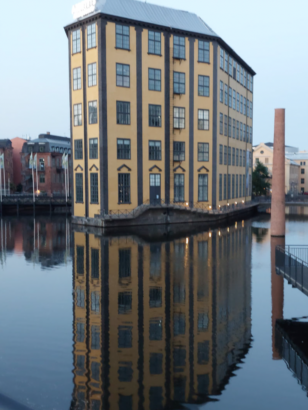Topic: Norrköpings stadsmuseum, Sweden
Norrköping has always been a town of immigrants. Already around 1650, with 5000 inhabitants, and the second largets town in Sweden, the estimates numbers of immigrants was about 20%, actually the same procentige as today, with 140 000 inhabitants.
In the 1960ies working force immigrants came mainly from Finland, and in a smaller amount from the southern part of Europe, Greece, Turkey, Portugal, although at that time not for so much work in the textile industry, which was declining, but to other manufacturing industries in the area, producing paper, microwave owens and tires. In the 1970ies political- and war refugees came, after 1973 from Chile, after 1979 from Iran. In early 1990ies from the war in ex Jugoslavia, mainly from Bosnia region, and in the 21th century from Irak, Afghanistan, Somalia and Syria.
 However, Norrköpings stadsmuseum would like to interview another group of people moving to the area, European citizens looking for jobs, using the free movement of working force within the union. The museum has already been in contact with Greek citizens, looking for better prospect in Norrköping, after the long economical set back in Greece since 2008.
However, Norrköpings stadsmuseum would like to interview another group of people moving to the area, European citizens looking for jobs, using the free movement of working force within the union. The museum has already been in contact with Greek citizens, looking for better prospect in Norrköping, after the long economical set back in Greece since 2008.
The history books for adult education have very little of modern history, they stop history around 2000, but there is always some notes about the EU. Sweden had a referendum in 1995 about joining the EU, and with a small plus the YES-side won. In the debate there was a big issue about how the Swedish work market would change if all Europeans freely could come and work in Sweden. Should there be a kind of second class working force that lowered the high salaries in Sweden? Would the social care system last if Europeans could use it in their benefit etc? Especially the Swedish unions was hesitating about the benfits of joining the common market.